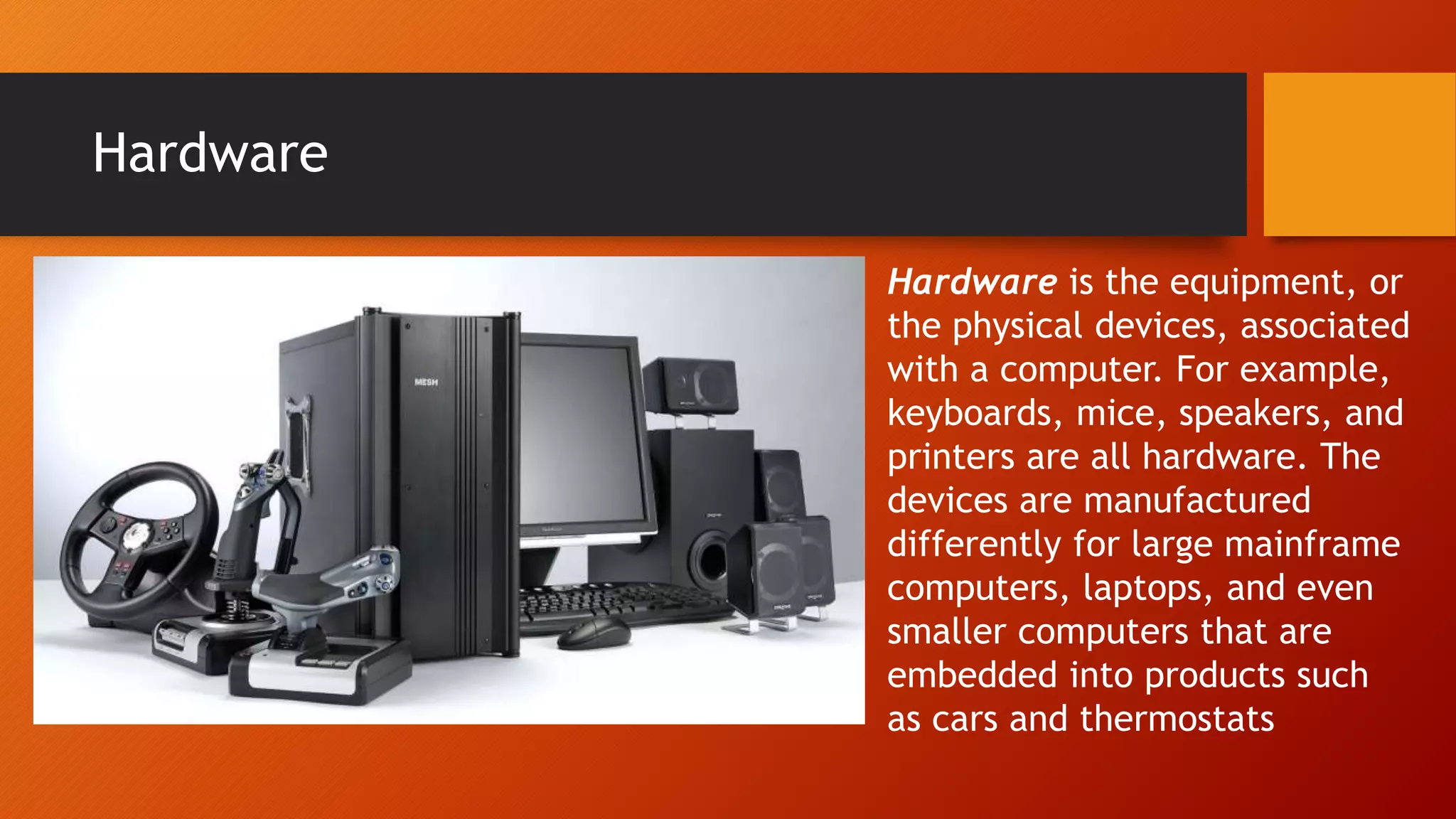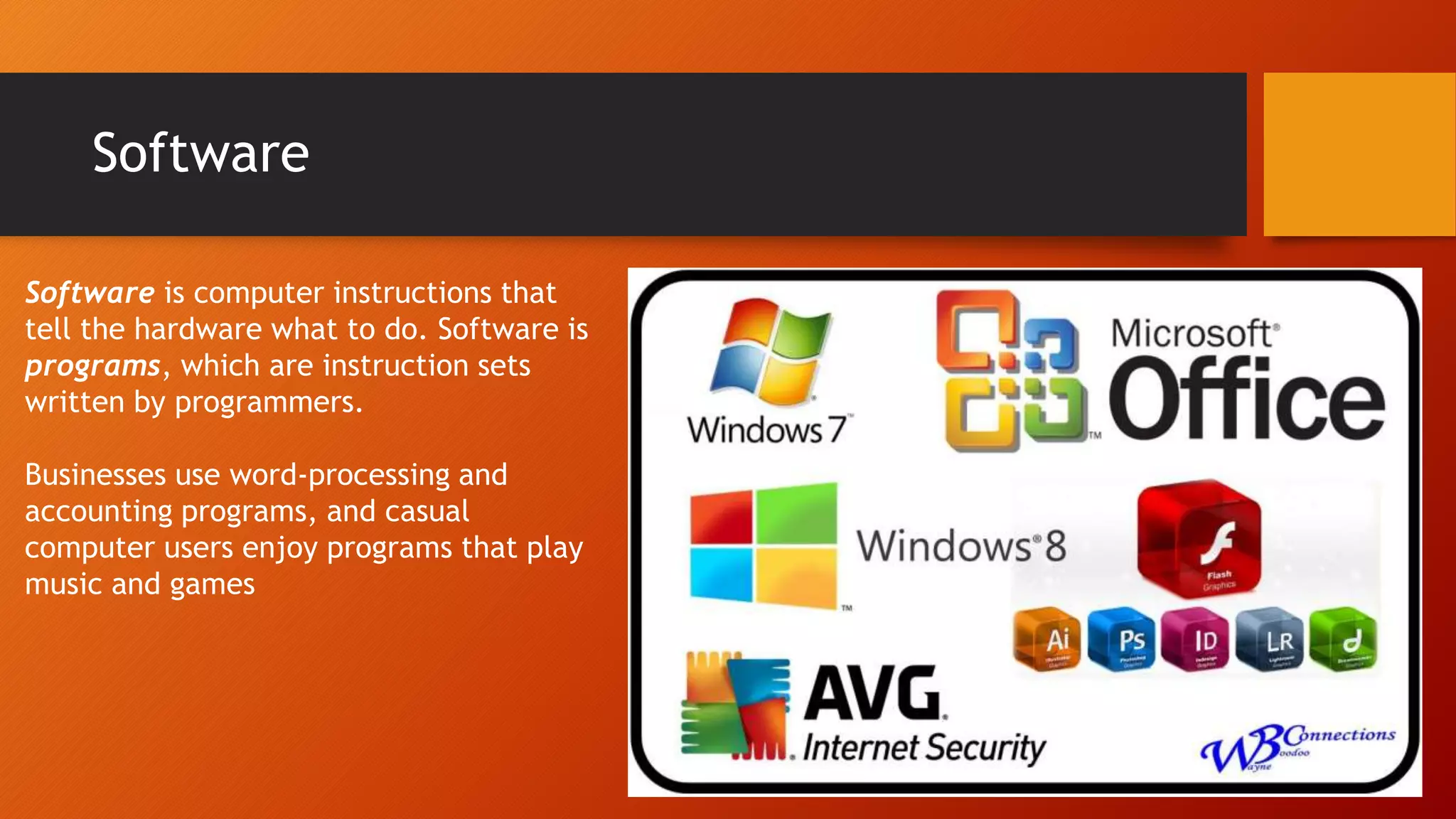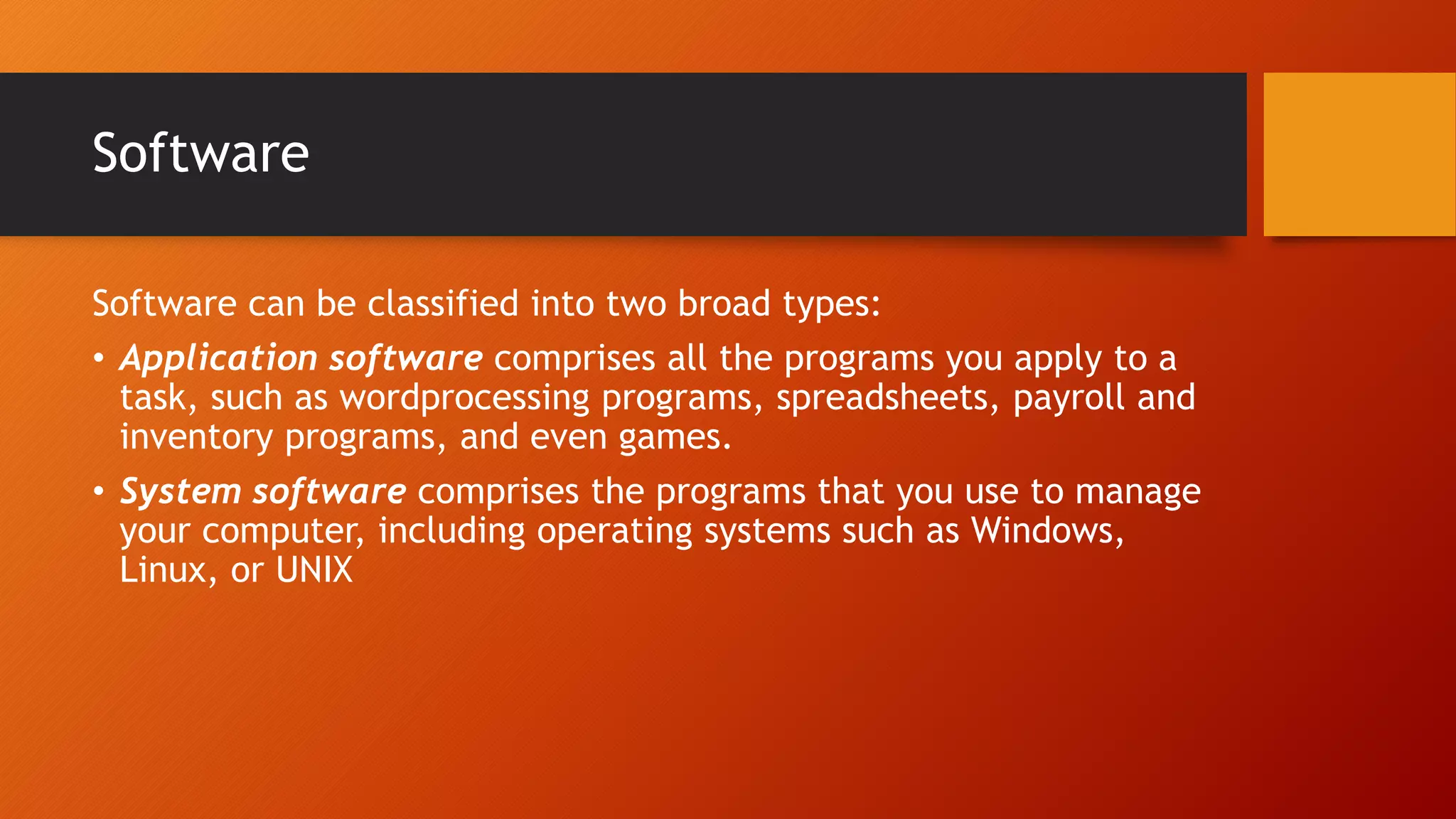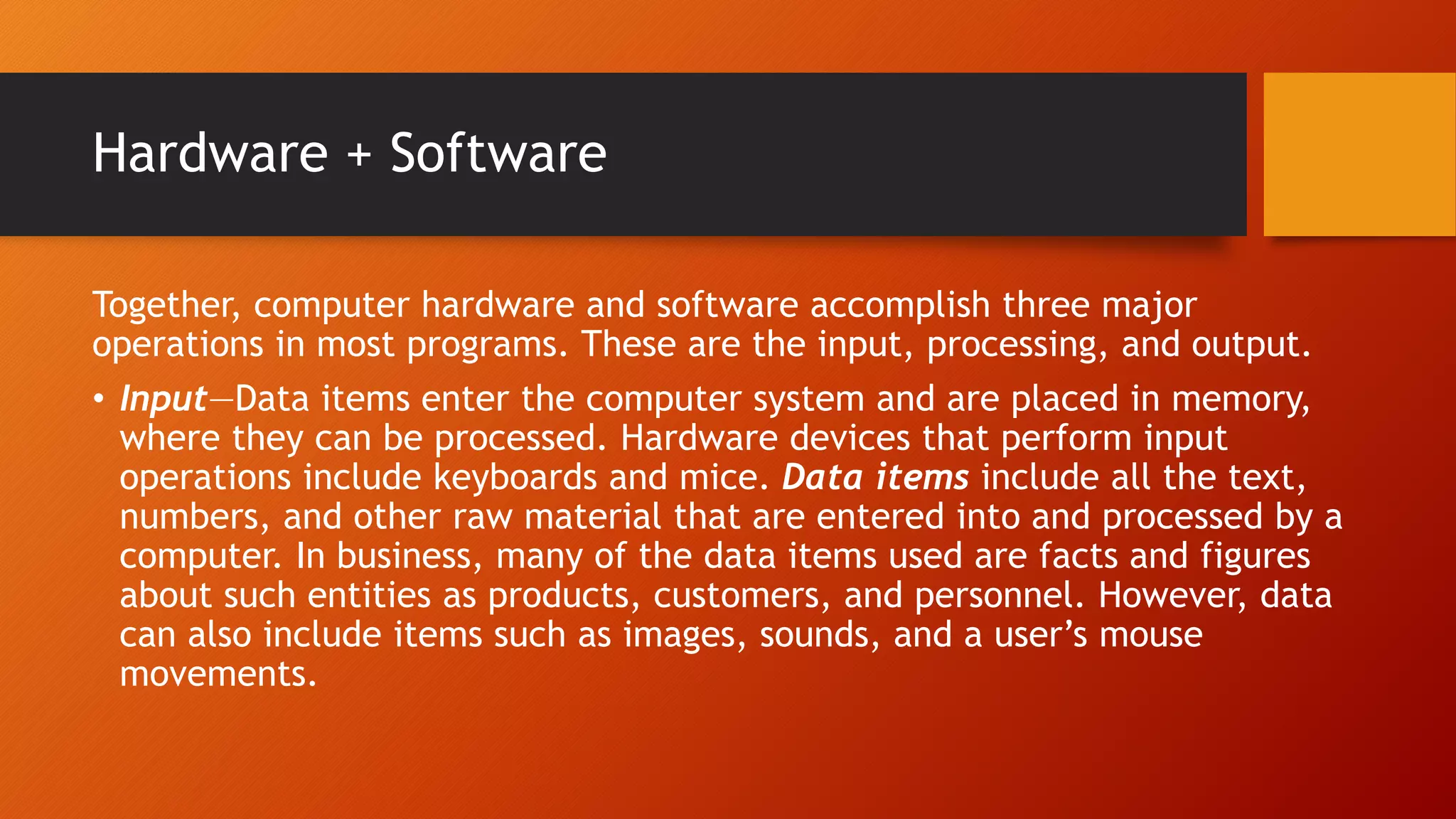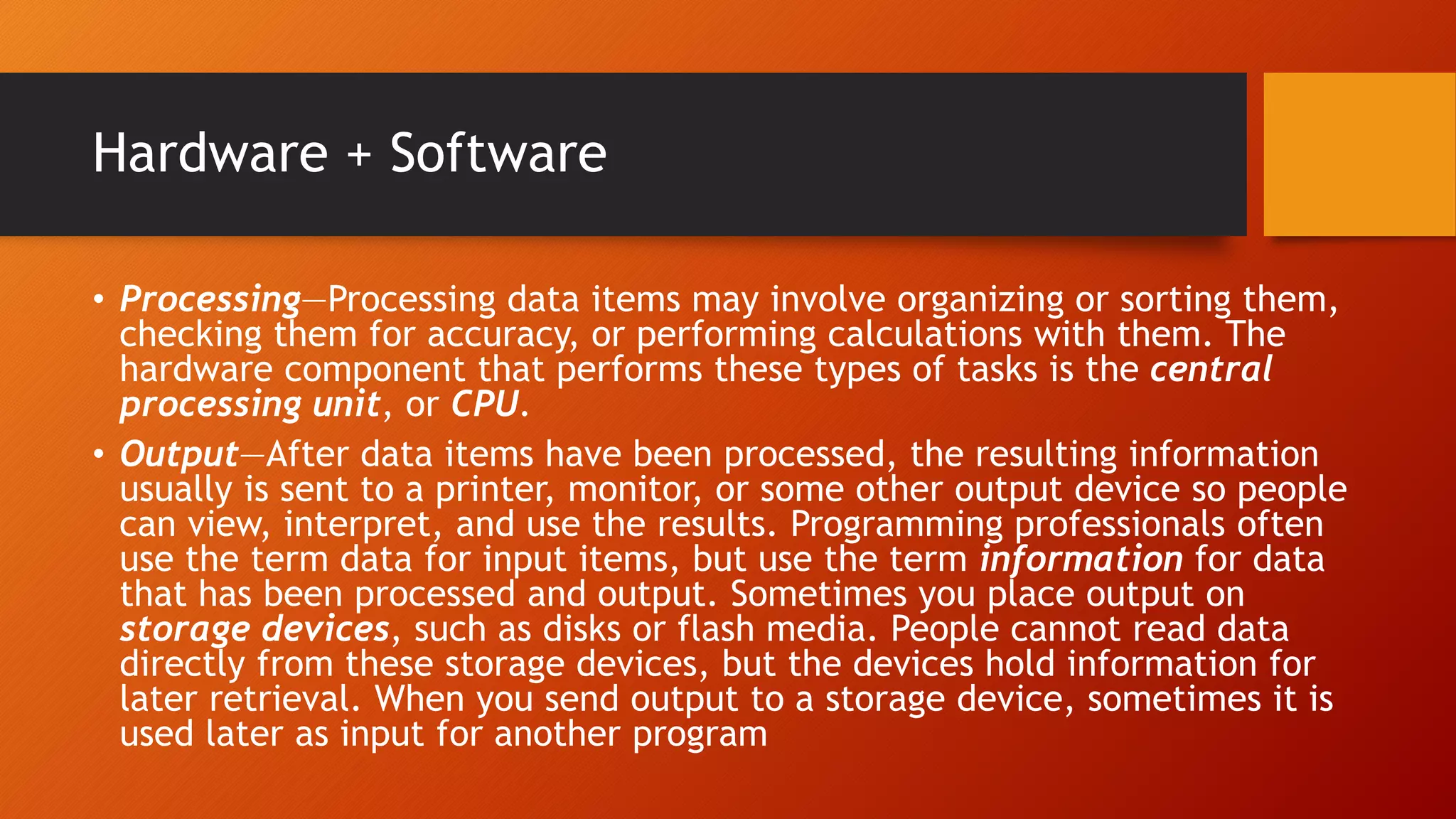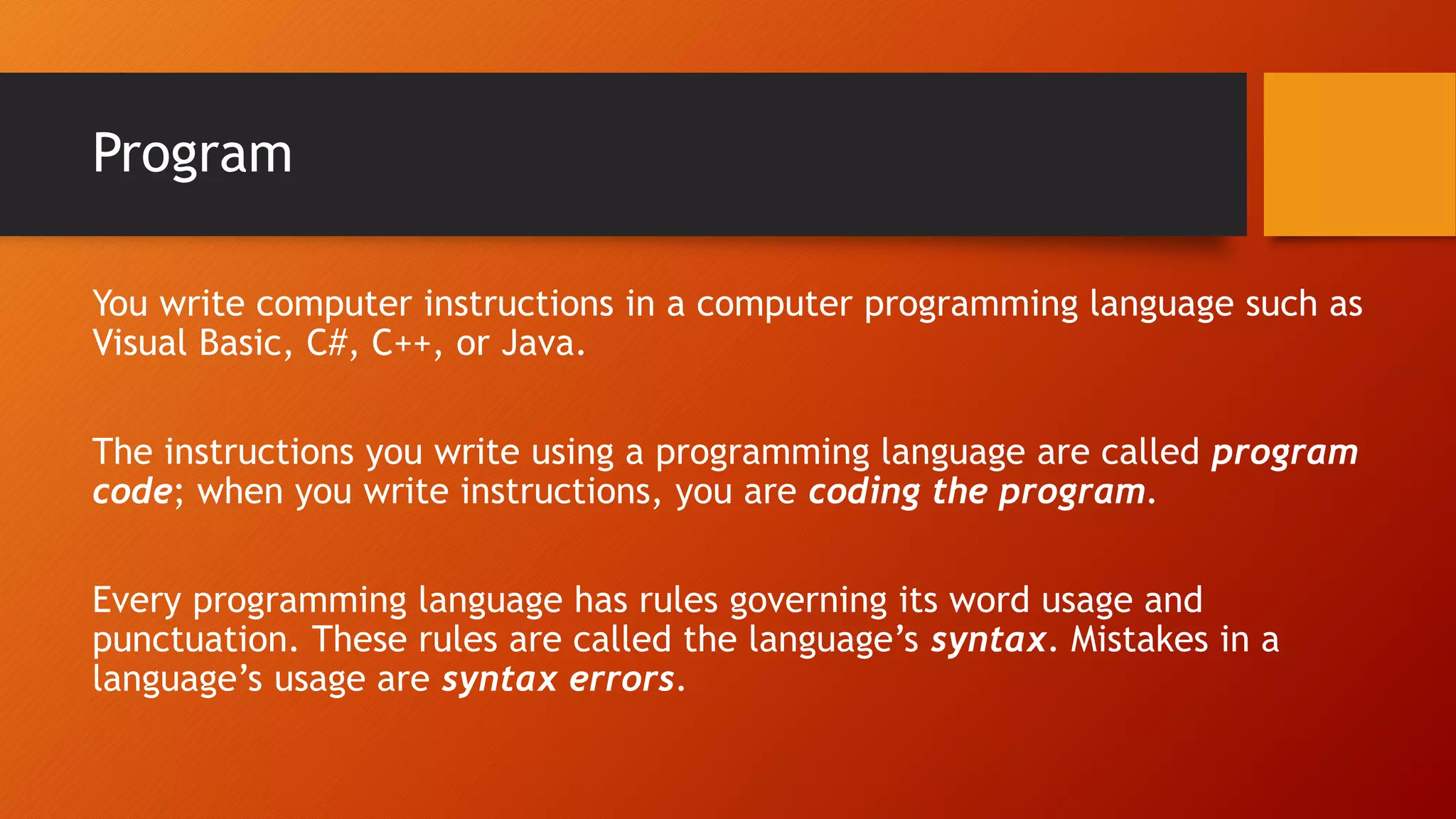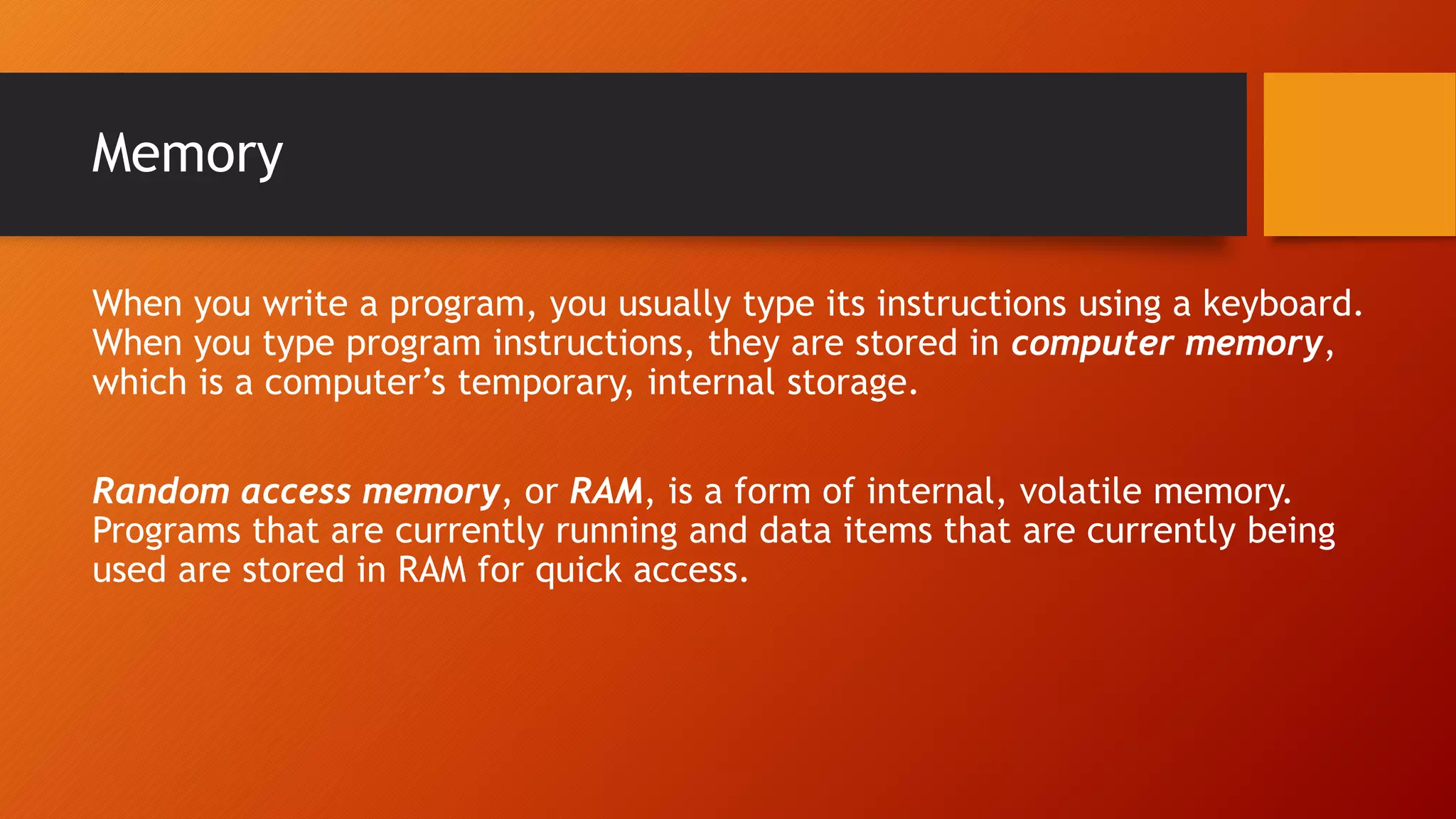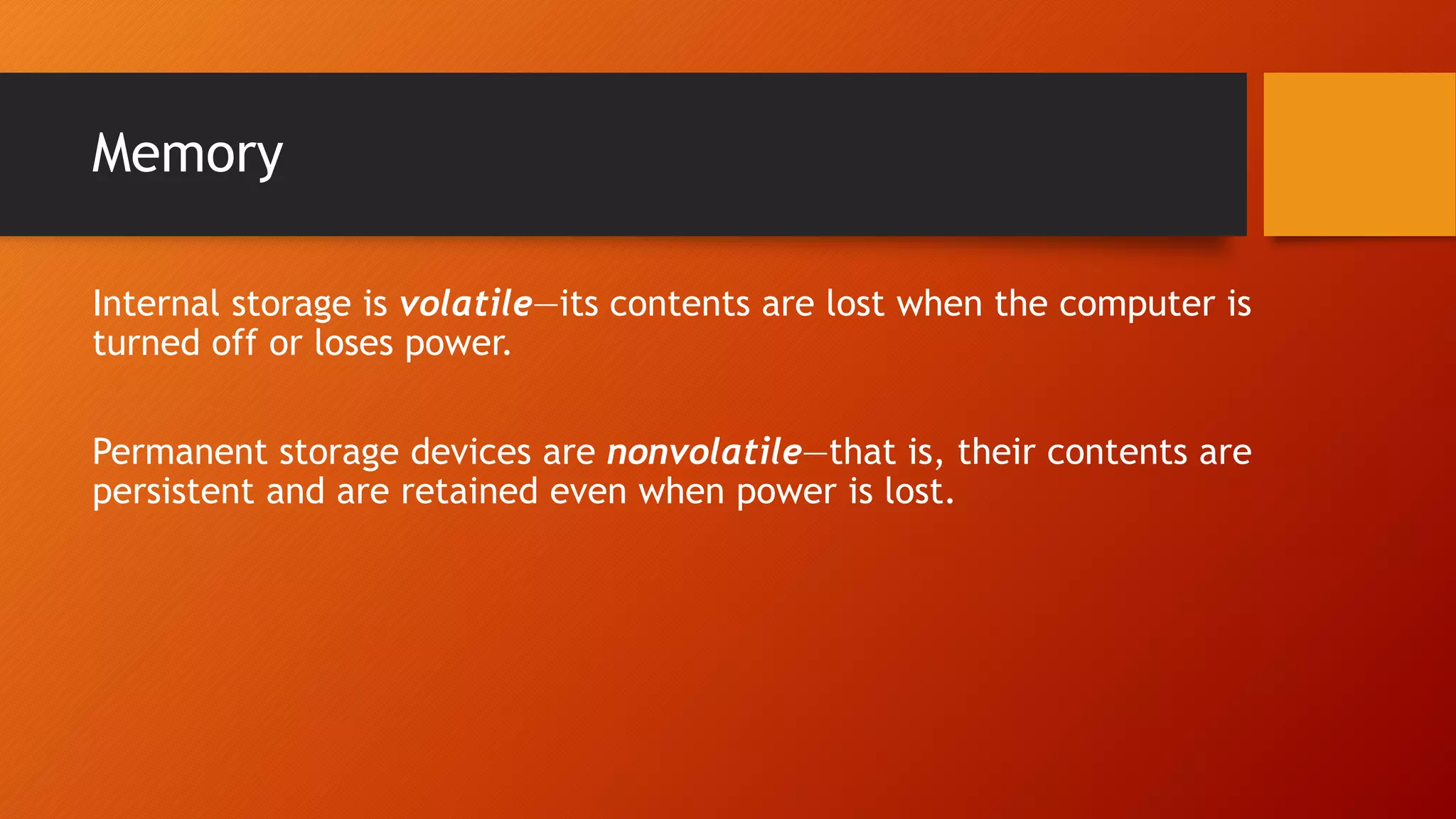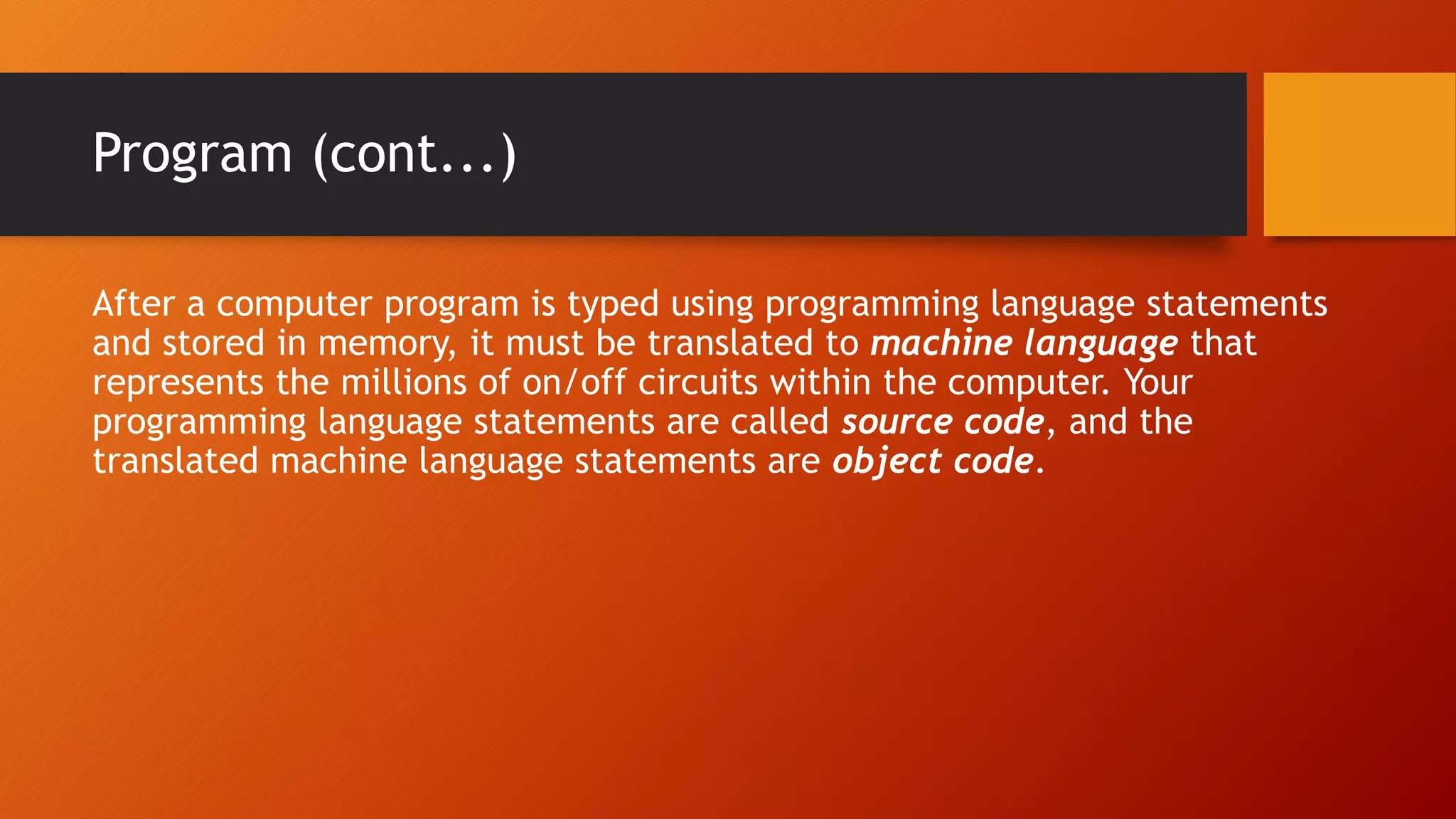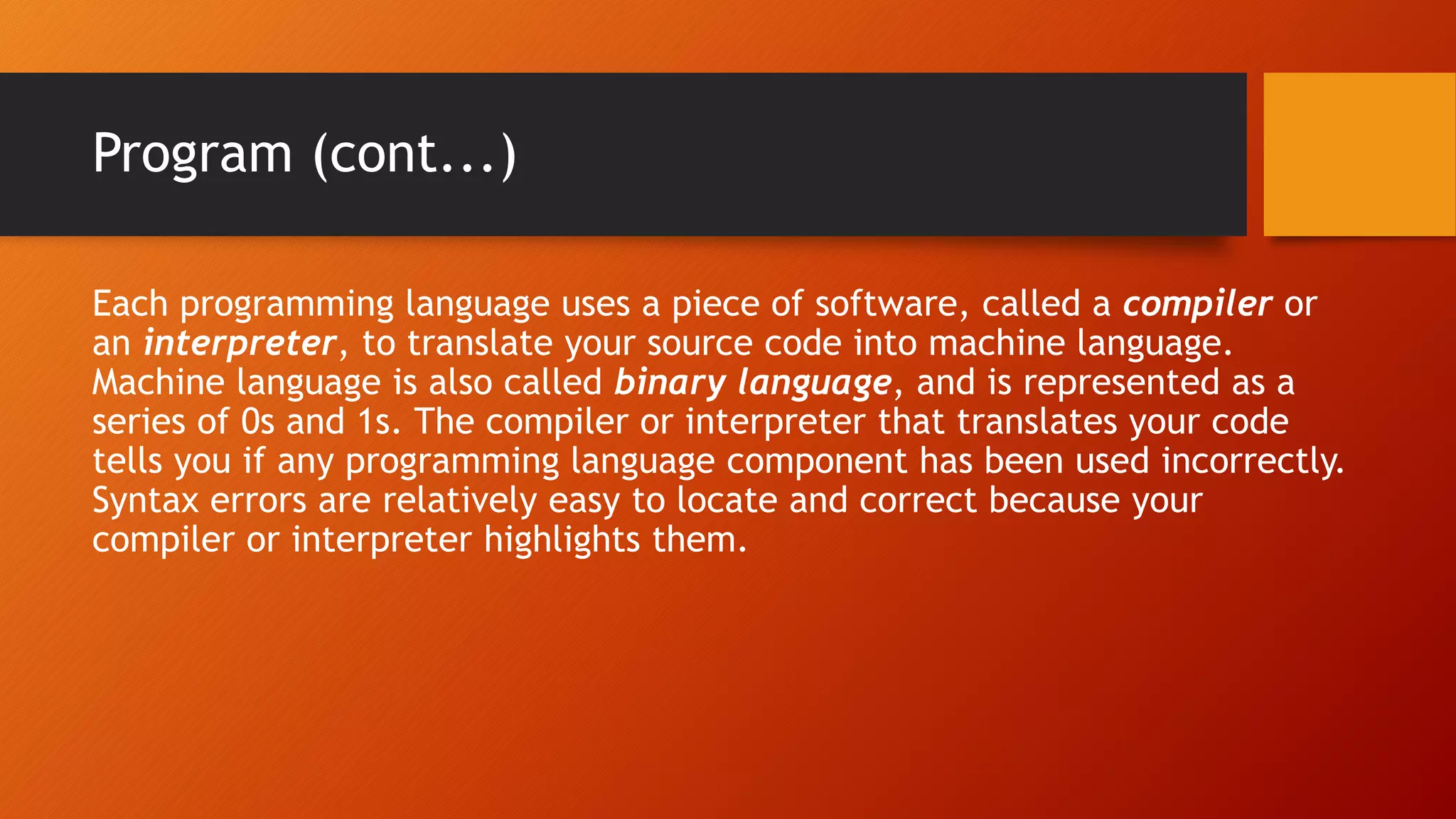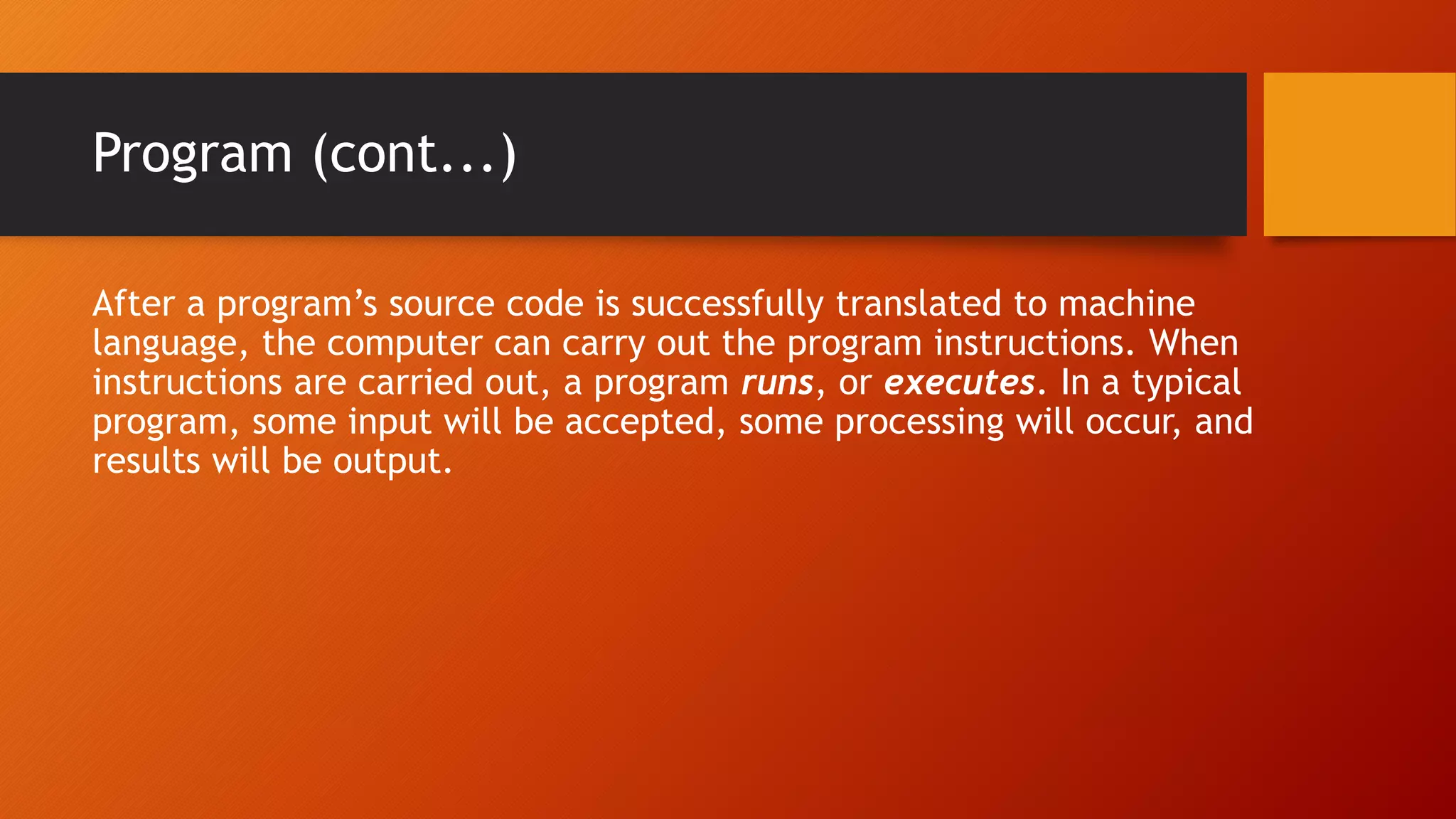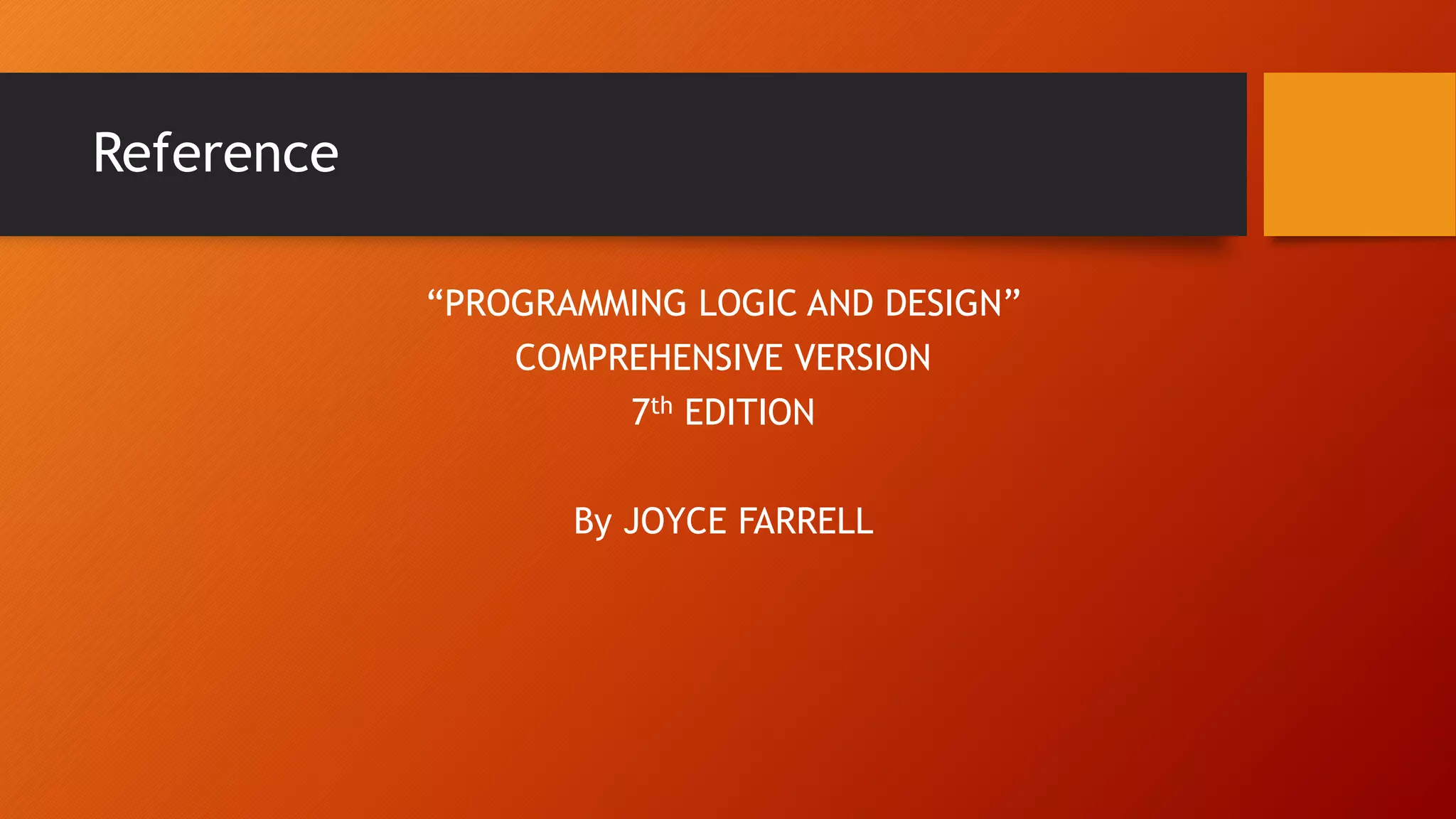This document provides an overview of computer hardware, software, memory, and the process of writing and running programs. It defines hardware as the physical devices of a computer like keyboards and printers. Software is made up of programs that tell hardware what to do, like word processing and games. Memory temporarily stores running programs and data, while storage devices hold information when the computer is off. To run a program, it must be written in a programming language, compiled into machine language, stored in memory, and executed by the CPU.

